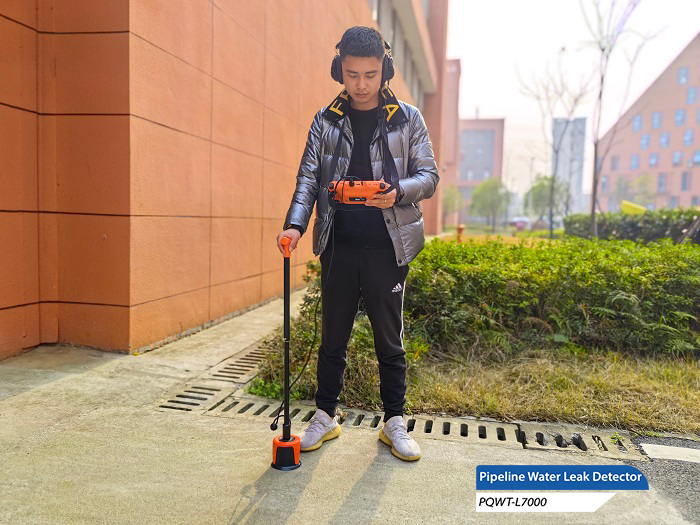Urban water supply pipeline network is like the bloodline of the city, its healthy operation is related to the well-being of people's livelihood and the sustainable use of resources. However, pipeline breakage and leakage are always threatening the stability of this lifeline. In this context, pipeline leak detector as an important tool to diagnose the "disease" of water supply network, its application and technical principles are particularly important. In this paper, we will analyze how pipeline leak detector collects and analyzes water leakage noise, efficiently locates leaks, and the complex propagation characteristics and spectrum analysis behind it.

1、Water leak noise generation and propagation mechanism
When the water in the water supply pipe network is under pressure and gushes out from the broken place, the friction with the pipe wall stimulates the mechanical vibration, which generates the water leak noise. This noise is essentially a longitudinal wave, through the medium of the sparse changes in propagation, so it is also known as sparse wave. Its characteristics for the composite waveform, including a variety of single waveform, and thus in the propagation process mixed with random signal waveforms.
2, propagation characteristics and spectral analysis
The propagation path of water leakage noise is diverse, including the propagation along the water inside the pipe, the propagation of the soil around the pipe, and the propagation along the pipe wall. Each propagation pathway has its own unique detection method:
①- The speed of sound propagating in water is about 1433 m/s, which is suitable to be captured by the water listening pipeline leak detector sensor;
② - Soil propagation, sound waves spread in the form of spherical waves, ground pickups can be located according to the sound intensity and timbre characteristics;
③- noise propagated by pipe wall, leakage point localization is achieved by double-end arrangement of pipeline leak detector sensors and related calculations.
Leakage noise spectrum covers 20 to 20000Hz, but in the actual detection, subject to attenuation and media absorption, can be captured in the range of 50 to 250Hz. different materials of pipelines, such as PE, PVC, steel pipe, casting pipe, the leakage noise of the frequency range of the different, and subject to the water pressure, pipe diameter, leakage size and shape of the leakage point of the influence of a number of factors.
3, the importance of the minimum noise level (MNL)
One of the key parameters to determine the leak is the "minimum noise level" (MNL). This is the pipeline network during the quietest hours, pipeline leak detector sensor can detect the lowest noise intensity, reflecting the baseline condition of the pipeline. It is particularly important to measure the MNL at night, especially between 2:00 a.m. and 2:30 a.m., when the city is relatively quiet. A high MNL value is indicative of a leak in the network, just as a "fever" signifies abnormal health, and this indicator can be used to perform a "health check" of the pipeline.
The pipeline leak detector provides a pair of "perspective eyes" for the maintenance of urban water supply pipeline network through fine leakage noise analysis. From the generation of noise, propagation characteristics to the analysis of the frequency spectrum, and then to the judgment of the minimum noise level, each step is the precise use of science and technology. With the continuous progress of technology, the future pipeline leak detector will be even smarter, building a solid line of defense to ensure the healthy operation of urban water supply systems.








